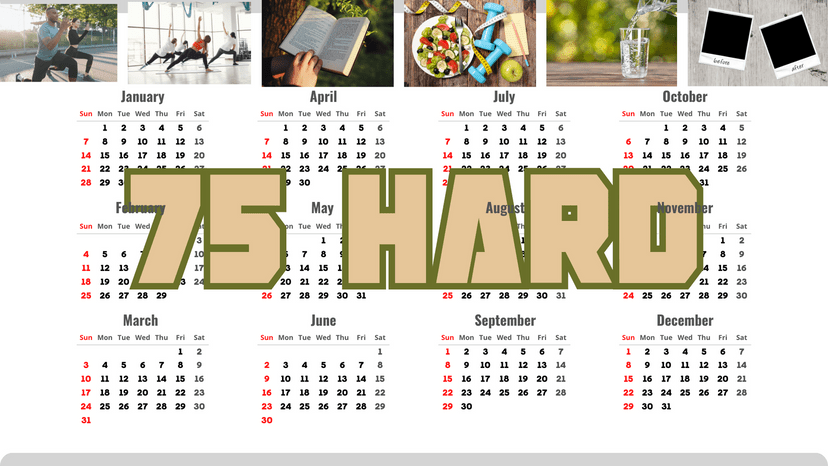How to Make Time for Your Weight Loss Goals

Prioritizing Weight Loss in a Busy Schedule
In today's fast-paced world, fitting in your weight loss goals into your busy schedule might seem like an arduous challenge. Nevertheless, prioritizing weight loss is of paramount importance, as it directly impacts your overall health. Turning this into a regular part of your routine requires some changes in your mindset and efficient planning. Not only do you need to set realistic goals, but finding ways to incorporate weight loss activities into your day and managing your time effectively are also important.
Setting Realistic Weight Loss Goals
The first step is to set realistic and achievable weight loss goals. Unrealistic or overly ambitious goals are often unattainable, leading to frustration and demotivation. When setting your goals, consider both your current fitness level and your long-term wants and needs. A pound of weight loss a week is often quoted as a safe and achievable aim, but this can be adjusted to better fit your personal circumstances. Importantly, remember to celebrate small victories along the way! This not only boosts your morale but reaffirms your commitment to the weight loss journey.
Incorporating Weight Loss Activities into Daily Life
Next, you need to weave weight loss activities into your daily routine. This doesn't necessarily mean spending hours in the gym; even small changes can make a huge difference in the long run. Here are a few examples:
- Try to incorporate more movement into your day. This could be as simple as taking a short walk during your lunch break, choosing stairs over the elevator, or doing some light stretches while watching TV.
- Opt for healthier food options. For instance, substitifying your big bag of chips with a fruity snack, or your sugary drinks with water.
- Sleep is often overlooked but is a critical part of weight loss. Ensure you're getting adequate sleep every night.
Time Management Strategies for Health
Finally, adopting effective time management strategies can help you cater to your health needs even with a full plate. Here are a few pointers:
- Start by identifying the time slots during your day where you could fit in exercise or meal preparation for healthy eating. It could be in the early mornings, during lunch breaks, or late evenings - whatever works for you.
- Consider meal prepping! Cooking in bulk saves time during the week and ensures you always have a healthy option on hand. Plus, it takes the stress out of deciding what to eat.
- Use tools and apps to plan and track your progress. Many outfit options offer reminders for workout sessions, guidance for exercises, personalized meal plans, and so on.
Both mindset and planning play vital roles in making health a priority. Remember - your health should never take a backseat, even in a busy schedule. Prioritizing weight loss and staying committed to your goals might take some time and practice, but the results - a healthier, happier you - are well worth the effort!
Efficient Exercise Strategies for Busy Individuals
Life's responsibilities often take the forefront, leaving little room for personal fitness. However, the escalating demands of everyday life should not override the quest for healthy living and achieving weight loss goals. Thankfully, there are efficient and effective exercise strategies that maximize results without eating into your precious time. These strategies, ideal for individuals who have limited pockets of free time, primarily revolve around high-intensity interval training (HIIT), short yet powerful workouts, and creative ways to keep active throughout the day.
Let's delve a little deeper to understand how these approaches work:
[High-Intensity Interval Training](/glossary/fitness/metabolic-conditioning) (HIIT) - One of the most efficient workout approaches available today is the High-Intensity Interval Training (HIIT). HIIT involves short bursts of intense exercise alternated with low-intensity recovery periods. According to scientific research, a 20-minute HIIT workout can burn calories at an equivalent rate to an hour-long treadmill jog, making it a time-efficient weight-loss methodology.
Short, Effective Workouts - The idea of having to spend hours at the gym to see results is outdated. Several studies have shown that short bouts of exercise, including resistance training, can yield weight loss benefits. It's about quality, not quantity - a short, concentrated workout can both ignite your metabolism and torch calories. Programs such as the 7-minute workout or Tabata, which involve high-intensity training for short durations, are examples of such effective routines.
Incorporating Movement into Your Day - Staying active doesn't always have to mean sweating it out at the gym. Simple modifications in your daily routine can substantially contribute to your calorie burn count and boost your fitness. Here are some ways to incorporate movement into your day:
- Use the stairs instead of the elevator or escalator whenever you can.
- Whenever possible, walk or bike instead of driving or taking public transit.
- Stand and do some light stretching exercises during work breaks.
- Perform small bouts of exercises (like jumping jacks or squats) during commercial breaks while watching TV.
Well-designed efficient exercise strategies, specifically catered for busy individuals, can pave the way for consistent, sustained, and time-friendly progress towards your weight loss goals. Fitness can fit into any lifestyle, no matter how packed it is. It is about prioritizing and making the best use of your time and resources. Remember, your health is your wealth. Don't wait for tomorrow; start today!
Nutrition and Meal Planning for Time-Savers
When we think about weight loss, our minds often jump to grueling gym sessions and long cooking and meal prepping hours in the kitchen. However, this thinking overlooks a key measure that is efficient nutrition management. Nutrition and meal planning in a time-effective way can greatly contribute to your weight loss goals without causing stress or eating up (no pun intended) your valuable time.
Quick and Healthy Eating Options
The first step in managing your nutrition in a time-efficient manner is to identify quick yet healthy eating options. Eating healthily does not mean you have to resign your food to a life of tasteless broccoli and chicken breast (unless that's what you enjoy). There are countless ways you can prepare healthy meals quickly.
For breakfast, you might opt for overnight oats, pre-prepared the night before, with a topping of fruits and a drizzle of honey. Healthy lunch options could include salads loaded with colorful vegetables, lean proteins, and a vinaigrette dressing. Dinners can be stir-fries or grills that incorporate lean meats or fish, along with an array of vegetables for a balance of macronutrients.
An essential part of these healthy yet time-efficient meals is the incorporation of whole, minimally processed foods. Foods like fruits, vegetables, whole grains, and lean proteins can fill you up, supply vital nutrients the body needs, and are quick to prepare.
Efficient Meal Prepping Strategies
The famous phrase, "failing to plan is planning to fail," rings especially true in the world of nutrition and weight management. Planning your meals effectively can create pockets of time that would've otherwise been spent scratching your head wondering what to eat.
The idea of meal prepping may seem daunting and time-consuming, but it can be made efficient with a few strategies. One such strategy is the bulk preparation of versatile ingredients. Cooked grains, roasted vegetables, and prepared proteins can be used in a multitude of ways throughout the week. For instance, roasted vegetables could be a side for dinner, thrown into a morning scramble, or added to a lunch salad.
Another approach is to opt for one-pot meals or sheet-pan dinners. By cooking everything in one pot or on one baking sheet, you cut down on cooking time and clean-up afterwards.
Staying on Track with Dietary Goals
While focusing on quick nutrition and meal planning, it is crucial to stay aligned with your dietary goals. This balance is struck by monitoring your caloric intake and macronutrient distribution according to your personal needs and weight loss goals.
Always be on the lookout for higher calorie foods that have managed to creep into your meals and limit your consumption of them. At the same time, ensure that you are getting sufficient proteins, healthy fats, and carbohydrates. Remember, cutting out any of these macronutrients completely is not a sustainable or healthy weight loss strategy.
Staying mindful and in control of your diet can sometimes feel like a challenging task, especially for those with fully-packed schedules. However, utilizing these strategies can make it possible to achieve your dietary goals, promote health, and facilitate weight loss, all without spending excessive hours on meal prep and planning.
In Summary
In today's busy world, optimizing weight loss into your tight schedule can seem daunting. Yet, by setting realistic goals, incorporating weight loss activities into everyday life, and utilizing effective time management strategies, your health can remain a priority amidst a demanding schedule. Opt for efficient exercise strategies like high-intensity interval training (HIIT), short impactful workouts, and creative ways to stay active throughout your day. As for nutrition, plan out your meals properly and nourishment can be quick, stress-free, and beneficial to your health and weight loss.
The plan of action to implement involves:
- Setting Realistic Weight Loss Goals - A realistic goal could be to lose one pound per week. This is both safe and achievable.
- Incorporating Weight Loss Activities - Merge these activities into your daily routine. Examples are taking a walk during lunch, choosing stairs over elevators, substituting unhealthy snacks for healthier options, and ensuring enough sleep.
- Time Management - Identify when during your day you can fit exercise. Consider meal preparation to save time during the week. Explore the use of tools and apps to assist your weight loss journey.
Action steps for you to follow are:
- Define a weight loss goal that is personalized to your current fitness level and long-term wants.
- Gradually incorporate more movement into your day. This could be simply choosing stairs over elevators or parking your car further away to encourage walking.
- Induce better eating habits. Consume healthy snacks over high calorie ones.
- Ensure you are getting adequate rest, a vital part of weight loss.
- Allocate suitable time slots to fit into exercise or meal preparations.
- Bulk cooking can save time during the week. Planning your meals ahead can help you stay on the healthy track with the added benefit of reducing stress from last-minute meal decisions.
- Utilize technology to assist with planning and tracking your weight loss journey.
- Implement efficient exercise strategies that fit into your lifestyle and promote substantial benefits, for instance HIIT.
- Include healthy options in your diet with whole, minimally processed foods which provide key nutrients without taking too much time to prepare.
- Stay aligned with your dietary goals by monitoring caloric intake and macronutrient distribution.
Remember, prioritizing health and weight loss might take some effort, but the ultimate payoff, a healthier you, will certainly be worth it!




